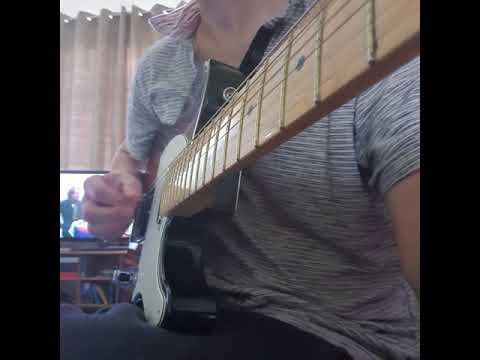I have been practicing crosspicking for a short time, but feel as though I fall into the murky waters of stringhopping very easily. I have watched the live seminar on crosspicking and understand the concept of moving across the strings with a curved motion but in practice I slip into bouncing up and down too much. To be honest this feels much easier than keeping a strict wrist motion (with maybe some forearm). I do understand thought that it limits speed and can lead to injury.
This is a video of me attempting to crosspock (please excuse my scruffy lockdown appearance) and the shabby playing as I gave only been working on it for a short time 
Feedback is most welcome
What you’re calling stringhopping I think is just your use of forearm motion, not stringhopping. There is not one way to “stringhop”, but when wrist players do it with the arm position you’re using here, the wrist makes a vertical pecking motion using flexion-extension. You’re not doing that. You’re making an arm turning motion in addition to wrist motions.
There’s nothing wrong with that. In principle there’s no law that says you have to only do roll patterns with wrist motion. You can use a combination of wrist and forearm if you want. The only way to know for sure if you have something that can work is to do it fast. If you can do it fast, with no tension, and allowing for some wrong notes, then you’ve got something. If you can’t go fast, then you don’t.
So basically you’re going to trial and error this. You’re looking for whatever motion feels fast and smooth and has errors. That’s your starting point. You can slow down a tiny bit from there and try to clean it up. And so on.
While you do this, you may as well also trial and error the wrist-only approach, or wrist-elbow. Try not to box yourself in. You don’t care which motion you use, you just want somehting that will allow you to play the line. I’ve given you my best thoughts on how to get the wrist-only motion in the lesson you already watched, so there’s no need to bang your head against the wall if that’s not working for you. But if you haven’t actually gone fast yet and allowed the errors to happen, then you may not have actually pursued that solution fully. Always make sure to start with that for any approach you want to learn, because that’s the only way you can learn what “smooth” feels like.
Brilliant, thanks for the advice. It does feel quite smooth and tension free doing it this way. I will try a few more options though and see what happens.
Thanks again

